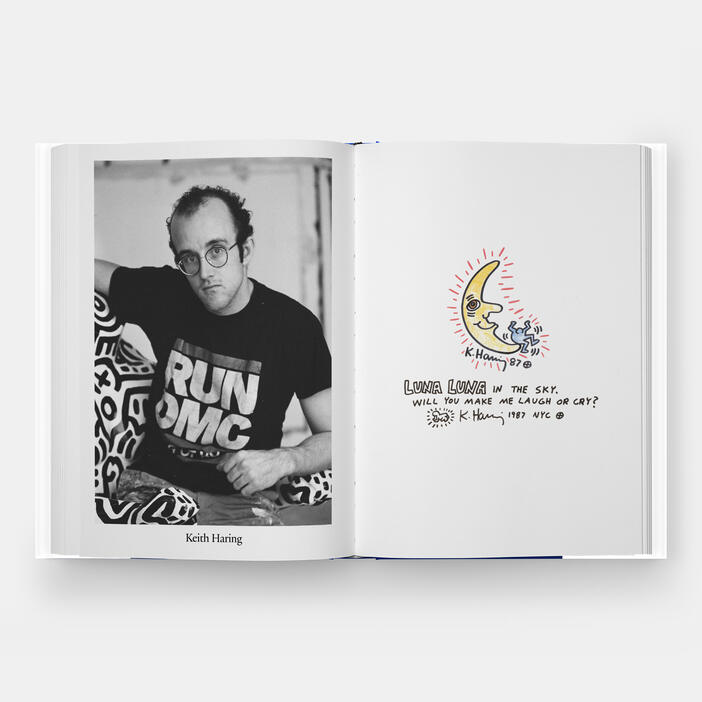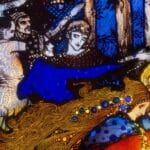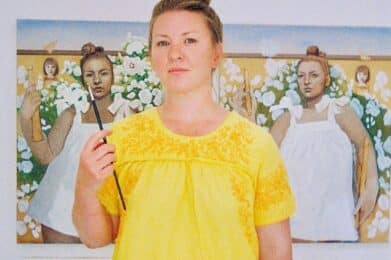Book Review: Luna Luna – The Art Amusement Park
Named after Luna Park in Coney Island, Luna Luna was an international collaboration involving the biggest titans in contemporary art, from Salvador Dalí to Roy Lichtenstein. It was a contemporary showcase of art and music as well as a functioning amusement park. Its unique place in art history has finally been rediscovered. Luna Luna: The Art Amusement Park is a handsome coffee-table book, serving as both an introduction and a retrospective.

Buy now: Luna Luna | Art | Store | Phaidon
In 1987, an amusement park appeared in Hamburg, Germany. Luna Luna had all the hallmarks of a traditional fairground, featuring carousels, games, and walk-in attractions. However, it held a second purpose as an especially ambitious art exhibition.
André Heller, an eccentric Austrian curator, secured a massive grant from Neue Revue, a German magazine also involved in the making of this book. He set about successfully enticing the biggest names in modern art to collaborate on this amusement park. Painters, musicians, sculptors, and cartoonists brought Luna Luna to life. Highlights include a carousel designed and painted by Keith Haring, a ferris wheel adorned with colossal imagery from Jean-Michel Basquiat, and a haunting Mechanical Theatre by Jim Whiting. These art objects were documented for posterity by Sabina Sarnitz. She tirelessly photographed the works from inception to installation, and the results of her mission provide the book’s visual content. True to Phaidon’s high standards, the image quality is high and well served by pull-outs and doublespreads throughout. Sarnitz photographed many of the attractions by night, all the better to show their bright colours. Her night-scenes are quiet and intimate, giving us private access to these forgotten relics of art history.
As well as internationally renowned artists, many upstarts from the bohemian art scenes of Europe were recruited. The overarching style of the contributions is psychedelic. As with any exhibition, there are weaker artworks in the mix. One such project is a Palace of the Winds, where flatulence was incorporated into classical music through live performances. You get the sense that this could have been left back in the eighties. That being said, everything in Luna Luna has been so lovingly archived for context in this book. Every piece serves to enrich the grander experience.

Buy now: Luna Luna | Art | Store | Phaidon
Taken as a whole, Luna Luna stands as a carnivalesque microcosm of the era’s preoccupations and anxieties. It can sometimes be unclear what was on offer for the actual children who visited it. Yet there’s no doubt that the sheer sense of fun emanating from the attractions must have been fascinating for the families who saw it live.
The art-park was originally destined for an international tour, but that never materialized. Sadly, the pieces were disassembled and stored in forty-four shipping containers. There they languished unseen for thirty-five years. A massive restoration of these art objects is underway, funded in part by the rapper Drake. Luna Luna has been rescued from obscurity, and this art-book has been published in tandem with this relaunch. As well as extensive photography of the works, Luna Luna: The Art Amusement Park includes written material from the original site and exhibition, an essay by Hilde Spiel, and a poignant interview with André Heller. As a septuagenarian, he finally gets to see Luna Luna rebuilt, to delight children and adults across the world.
The selection leans more heavily towards the twentieth century onwards, and as is the case with modern art, some of them are better than others. It’s ultimately subjective at the end of the day, and the variety on offer means that the widest range of tastes is still catered to.

Buy now: Luna Luna | Art | Store | Phaidon
“Luna Luna in the sky. Will you make me laugh or cry?” – Keith Haring, NYC (1987)

























![Conversation with Maser: “I found graffiti definitely was the vehicle for me to be able to really explore what I wanted to do, meet similar peers that had the same sort of mindset as me […]”](https://dublinartlife.com/wp-content/uploads/2022/09/DAL-Interview-4-391x260.png)






